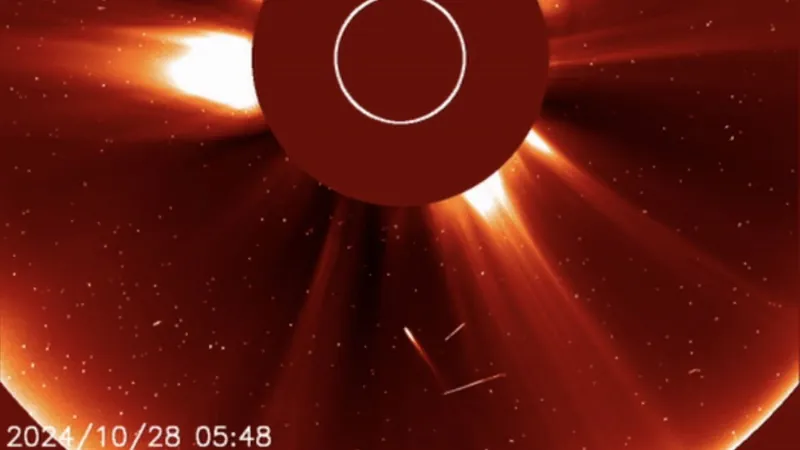
The Meteoric Demise of Comet C/2024 S1 (ATLAS): A Halloween Disappointment
2024-10-31
Author: Rajesh
Introduction
Comet C/2024 S1, also known as ATLAS, has officially met its end, leaving skywatchers with a chilling tale instead of the Halloween spectacle they had hoped for.
The Disintegration of Comet ATLAS
On October 28, as it approached perihelion—the point in its orbit closest to the sun—the comet disintegrated into nothingness. Just days earlier, on October 23, it passed near Earth, reaching a magnitude of 8.7. Unfortunately, this brightness was far too faint for observers to see with the naked eye, although enthusiastic astronomers were able to capture the eerie beauty of this icy traveler with telescopes.
Visibility Challenges
The dreams of a bright Halloween comet were dashed as astronomers observed ATLAS beginning to break apart earlier in October. Once the comet started its trajectory toward the sun, visibility became increasingly challenging, and it could only be tracked using specialized solar observation instruments like the Solar and Heliospheric Observatory (SOHO), a mission managed through collaboration between NASA and the European Space Agency.
The Kreutz Sungrazers
Discovered just last month on September 27 by the Asteroid Terrestrial-impact Last Alert System (ATLAS) in Hawaii, C/2024 S1 belongs to an ancient lineage known as the Kreutz sungrazers. These comets, which include fragments from a majestic parent comet that disintegrated eons ago, follow orbits that take them perilously close to the sun every 500 to 800 years. Notably, the earliest known sungrazer sighting dates back to 317 BC.
Comet as a 'Dirty Snowball'
Comet ATLAS was categorized as a "dirty snowball," a mixture of gases, rocks, and icy materials leftover from the birth of our solar system approximately 4.6 billion years ago. Such formations provide hints into the early solar system's conditions, offering glimpses at celestial origins.
A Bright Spot: Comet C/2023 A3
While C/2024 S1's demise was a letdown, not far behind it was another celestial visitor, Comet C/2023 A3 (Tsuchinshan-ATLAS), which joyfully survived its close encounter with the sun on September 27. This comet dazzled skywatchers throughout much of October, reaching brightness that allowed it to be seen by the naked eye—much to the delight of astronomers and casual stargazers alike.
Conclusion
As the cosmos continues to present its wonders, the saga of Comet ATLAS underscores the unpredictable nature of these celestial bodies and the thrilling, albeit sometimes disappointing, spectacle they provide. Skywatchers remain hopeful for future comets that may light up our skies with mesmerizing displays. Stay tuned—who knows what other cosmic events lie in wait!




 Brasil (PT)
Brasil (PT)
 Canada (EN)
Canada (EN)
 Chile (ES)
Chile (ES)
 España (ES)
España (ES)
 France (FR)
France (FR)
 Hong Kong (EN)
Hong Kong (EN)
 Italia (IT)
Italia (IT)
 日本 (JA)
日本 (JA)
 Magyarország (HU)
Magyarország (HU)
 Norge (NO)
Norge (NO)
 Polska (PL)
Polska (PL)
 Schweiz (DE)
Schweiz (DE)
 Singapore (EN)
Singapore (EN)
 Sverige (SV)
Sverige (SV)
 Suomi (FI)
Suomi (FI)
 Türkiye (TR)
Türkiye (TR)